Shining a light on the women of Indonesia
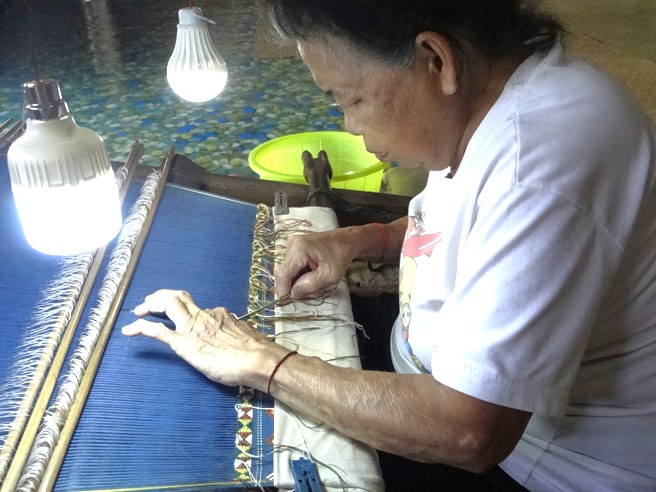
Woman handweaving with good lighting. Credit - E.L. Yuliani, CIFOR.
Micro-hydropower: Empowering women
“It feels like a dream! Usually it's dark here. We used to weave until our eyes were sore and our heads were dizzy because it was too dark. But now we have bright light and it's comfortable to weave,” the women of Kedungkang and Pelaik hamlets expressed their happiness when the electricity from the micro-hydropower started operating and the lights came on, illuminating the entire long-house.
These hamlets are home to the Iban Dayak, one of the Dayak sub-ethnic groups in Kalimantan, Indonesia. Kedungkang is two to three hours by motorcycle from Lanjak town, depending on the weather. Pelaik is more remotely located in the middle of the Danau Sentarum wetlands, two hours by a 15-horsepower speedboat in the wet season or four to six hours in the driest months by motorcycle and a smaller boat. People’s main livelihoods are based on crop cultivation, agroforestry (fruit, rubber), and traditional fisheries. Their products are sold mainly to middle-persons with much lower prices. For additional sources of income, women also weave traditional fabrics, and some men work in Malaysia as construction labourers.
"Not afraid or competing over fruits because they [the orangutans] were the ones who ‘planted’ the fruit trees. We are sharing space.”
The Iban people are known as guardians of orangutans because of their traditional belief systems and customary rules. They believe that their ancestors were helped by the orangutans during inter-ethnic wars hundreds of years ago, and that respected elders were reincarnated as orangutans when they passed away. They also believe that their ancestors learned about medicinal plants from the orangutans. These beliefs have been passed down the generations, resulting in a relatively higher orangutan population around their communities compared to other forests where local communities do not hold such beliefs.
“In fruiting seasons, orangutans often come close to the settlement. We could see them or hear their calls from our house. I saw an orangutan clinging to those trees last season,” said Sasiana, an Iban Dayak woman while pointing to the trees when we were walking in the Pelaik forest. When we asked how she felt, she replied, “Nothing, I just felt normal. Not afraid or competing over fruits because they [the orangutans] were the ones who ‘planted’ the fruit trees. We are sharing space.”
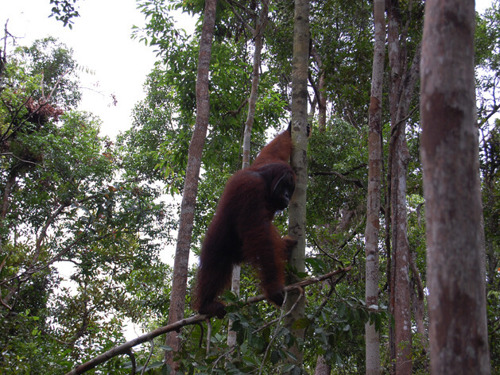
Weaving traditional fabrics, originally made for their own uses in traditional ceremonies, is part of the Iban culture. In the last few years, Indonesian natural-dyed handwoven fabrics, including those of the Iban, have been gaining popularity in Indonesian and international markets. The women started receiving orders through community-empowerment programmes. At the same time, their income from agroforestery and fish products was decreasing. Rubber prices have dropped since 2015, while fish catch has decreased considerably since mid-2010 when some of the secondary forests in the wetland’s catchment area were converted to oil palm plantations, causing siltation and water pollution.1 These changes have made handwoven fabrics an important alternative source of income.
However, the lack of electricity was the main barrier for the women. Being remotely located, many hamlets in the region are lacking access to the state’s electricity powerlines. The Dayak long-house consists of tens of bilik, the local term for each family’s house (similar to an apartment) within the long-house. In 2016, they were only given a small solar panel producing 50-70 watts / hour / bilik in good weather (less in cloudy or rainy days). With insufficient electricity, women mostly weave during the day relying on sunlight, or in the evening using headlamps and traditional torches, despite feeling dizzy and sore of eyes.
The micro-hydropower installations supported by this project in Kedungkang and Pelaik hamlets in the last quarter of 2023, and in Entebuluh and Sungai Iring in mid-2024, have changed the situation. Electricity from the micro-hydropower enabled the installation of an internet signal booster. Previously, people had to climb the nearest hill to receive a signal. The electricity provided by the system has enabled women to weave comfortably to meet the buyers’ orders, as well as to communicate directly with buyers.
For example, in the previously unelectrified Entebuluh, home to 25 households situated in over 17,800 ha of forest, the micro-hydropower installation provides 400-500 watts / hour / bilik. This supplies enough electricity for lighting all rooms, powering a TV, and an internet signal booster 24 hours / day.
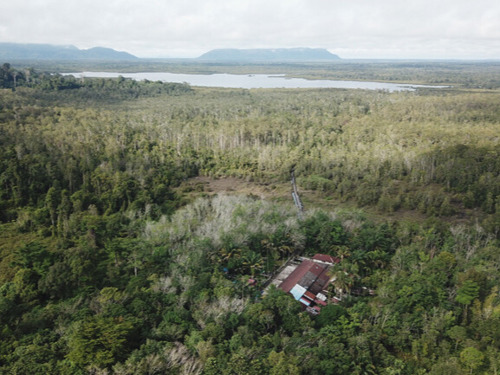 Aerial photo of Pelaik. Credit - Zakariya, Impro.
Aerial photo of Pelaik. Credit - Zakariya, Impro.
Enabling women to work in the evening might increase their workloads while men enjoy more leisure time with other men. We therefore asked how the women felt. They said, “If we were not weaving, we were just chatting unproductively and got bored. Weaving is relaxing and energising. When we are weaving, husbands look after our children so we are much less tired. We share responsibilities.”
Others added, “With or without electricity, we are weaving because it gives good income. But with electricity, it’s much more comfortable. We can see the yarns clearly, so we can work at a nice pace without pressure. If we feel tired, we just stop and continue the next day.”
Prior to installing the micro-hydropower system, the project laid a strong foundation and the local communities’ sense of ownership to ensure its sustainability, through a series of discussions on the need to maintain the installation self-sufficiently, participatory decision-making and capacity building of individuals and local institutions. We also explained that the micro-hydropower and other poverty reduction activities in this project are an acknowledgement of the people’s protection of the orangutans and forest, based on their traditional belief systems and customary rules.
In accordance with the Iban Dayak culture, discussions and participatory processes were held in the long-house, involving all community members. Women spoke freely and confidently, expressing their thoughts and ideas. In our stays in the field for various studies since 1991, we also observed that in day-to-day activities, Iban women are as active as men. There did not appear to be cultural barriers to their participation, and gender-differentiated domestic roles were more equal than in other places in Indonesia. The project has sought to tackle the lack of basic components of livelihoods such as electricity and opportunities to build local women's capabilities and agency.
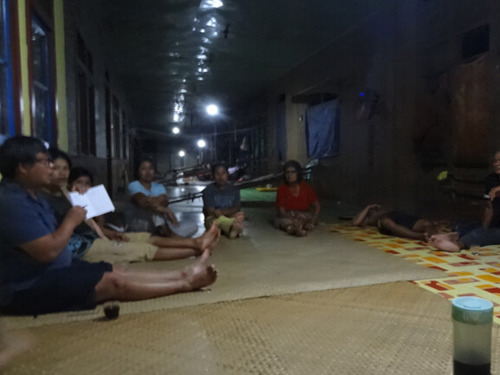
1 Ministry of Agrarian and Spatial Planning. 2022. Preparation of Space Utilization Control Devices in the Danau Sentarum Area of Kapuas Watershed. Putussibau, 14 September 2022.
Written by Elizabeth Linda Yuliani, Carol J. Pierce Colfer, Amy Ickowitz, Valentinus Heri, and Veronika Heni. For more information on this Darwin Initiative Main project 29-016, led by Center for International Forestry Research (CIFOR), please click here.
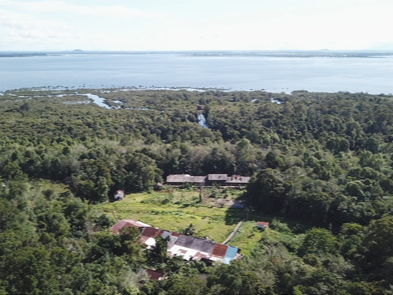
 Training on micro-hydropower maintenance. Credit - Valentinus Heri, Jim Sammy, Riak Bumi.
Training on micro-hydropower maintenance. Credit - Valentinus Heri, Jim Sammy, Riak Bumi.
 Back
Back